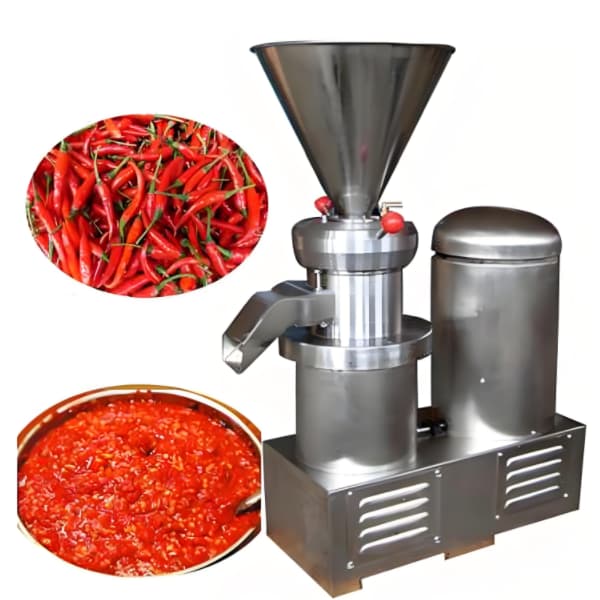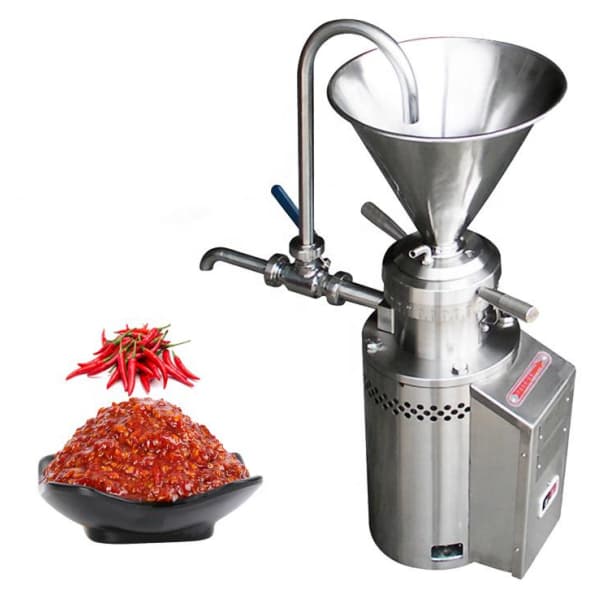Introducere: Why You Need a Chili Pepper Grinder
Rasnita de ardei iute :Spices are the lifeblood of many cuisines across the globe, și chili peppers rank among the most important. From the fiery Sichuan peppercorns of China to the bold jalapeños of Mexico, dried chili peppers form the foundation of countless flavor profiles. To harness the true power of these dried chilies, grinding them properly is crucial.
Acolo este un chili pepper grinder intră. Whether you’re a home cook looking for a fresh batch of chili flakes or a commercial processor preparing tons of chili powder daily, the right grinder can make all the difference.
În acest ghid, we’ll walk you through everything you need to know about chili pepper grinders—from types and materials to applications and maintenance.

Types of Chili Pepper Grinder Machines
Choosing the correct grinder depends on your usage. Here’s a detailed overview of the different types:
1. Manual Chili Pepper Grinder for Home Kitchens
Manual grinders are hand-operated, often compact, and perfect for small-scale use. Typically made of glass, ceramic, or stainless steel, these grinders are ideal for crushing a few grams of dried chili at a time.
PRO:
- Inexpensive
- Portable
- Usor de curatat
Contra:
- Limited capacity
- Time-consuming for large batches
2. Electric Chili Pepper Grinder for Medium-Scale Use
Electric grinders are powered by motors and provide consistent, măcinare rapidă. These machines usually have adjustable settings for fineness and can process a few kilograms per hour.
Aplicații comune:
- Restaurant kitchens
- Spice retail businesses
- Small food production facilities
3. Industrial Chili Pepper Grinder for Commercial Processing
For bulk operations, industrial chili pepper grinder machines offer unmatched performance. These grinders can process 100 kg or more per hour and often include features like dust removal, sifting, and stainless steel blades for continuous operation.
Industrial Use Cases:
- Spice manufacturing plants
- Food processing factories
- Export-oriented spice industries

Chili Pepper Grinder Long-Tail Variants and Their Functions
To perform well in SEO and product classification, it’s essential to know the various long-tail versions of this keyword:
Commercial Chili Pepper Grinder Machine
This version is often used in wholesale or food processing settings. These machines can handle large quantities and usually come with safety certifications and powerful motors.
Chili Powder Grinding Equipment
Some customers search for equipment that emphasizes end-product texture, like fine chili powder or chili flakes.
Dried Chili Crusher or Dried Pepper Pulverizer
These synonyms are often used interchangeably, particularly in B2B platforms or by non-English native users.
Key Features to Consider in a Chili Pepper Grinder
Whether you’re buying a home-use or industrial model, the following features matter:
1. Material de construcție
Stainless steel is the preferred material for commercial grinders due to hygiene and durability. For home grinders, ceramic and plastic are also common.
2. Capacitate de măcinare
Measured in kg/h, this determines how much chili the machine can process. A home grinder may handle 50-200 grams per session, while an industrial machine can grind 500–1000 kg/h.
3. Motor Power and Speed
Electric chili pepper grinders usually come with motors ranging from 300W to 11kW. High motor power means faster grinding and smoother operation.
4. Fineness Adjustment
Adjustable mesh or blade settings allow users to control the final product—ranging from coarse flakes to ultra-fine chili powder.
5. Safety Mechanisms
For commercial use, features like automatic shut-off, protectie la suprasarcina, and food-grade certification are vital.
Technical Specifications of Popular Chili Pepper Grinder Models
| Numele modelului | Capacitate (kg/h) | Putere (kW) | Mesh Fineness | Material | Aplicație |
|---|---|---|---|---|---|
| GR-150 | 50–100 | 1.5 | 20–80 mesh | SS304 | Ateliere mici |
| GR-300 | 200–400 | 5.5 | 40–100 mesh | SS304/316 | Mid-scale production |
| GR-500 | 600–1000 | 11 | 60–300 mesh | SS316 | Industrial spice factories |
| GR-800 | 1000–1500 | 18.5 | 100–500 mesh | SS316 | Bulk grinding & export |
Applications of Chili Pepper Grinders in Food Industry
1. Spice Blending Lines
The grinder is often the first step in chili-based spice blend production. A uniform particle size ensures consistent flavor in every batch.
2. Sauce & Paste Preparation
Grinders are also used in producing base chili pastes or sauces. In these cases, they may be integrated with wet grinders or pulverizing equipment.
3. Chili Flake Manufacturing
Some customers prefer crushed chili flakes. Adjustable grinding helps achieve the desired size.
4. Ethnic Cuisine Production
Regional cuisines like Indian, Korean, Thai, and Mexican heavily rely on freshly ground chili powder for authenticity.
Top Brands for Chili Pepper Grinders
- DT Food Machine Co., Ltd. – Known for stainless steel industrial spice processing lines
- ABC Machinery – Offers medium to large-capacity chili grinding systems
- MillPro Grinders – Popular among commercial spice manufacturers
- Cuisinart & Chefman – Preferred brands for home-use electric chili grinders
How to Use a Chili Pepper Grinder Safely and Effectively
- Dry the chili peppers completely – Moisture leads to clogging.
- Remove stems – Only the body of the chili should be ground.
- Feed gradually – Especially with high-speed grinders.
- Use sieves or filters – To ensure consistent powder size.
- Wear protection – Grinding chili releases fine particles that can irritate eyes or skin.
Maintenance Tips for Chili Pepper Grinding Machines
- Clean after each use to prevent oil residue buildup.
- Avoid water on electric parts; use compressed air or dry brushes.
- Check and replace blades or screens periodically.
- Lubricate bearings and moving parts for smooth operation.
Întrebări frecvente (Întrebări frecvente)
Q1: Can I grind other spices in a chili pepper grinder?
A: Da, most grinders can handle spices like cumin, black pepper, and coriander, though chili residue may linger.
Q2: What’s the difference between a chili mill and a chili grinder?
A: Mills usually offer coarser output and manual operation, while grinders (especially electric/industrial) produce fine powder and have higher capacity.
Q3: How long does a commercial chili grinder last?
A: With proper maintenance, an industrial model can last 5–10 years or more.
Q4: What is the typical price range?
A:
- Manual grinders: $10–$50
- Electric home grinders: $50–$300
- Industrial grinders: $2,000–$20,000+
RFQ (Cerere de ofertă) Guide for Chili Pepper Grinder
If you’re a buyer, consider including the following when sending RFQs:
- Required capacity (kg/h)
- Preferred power (single-phase or three-phase)
- Desired fineness range (mesh size)
- Food-grade material requirement (SS304/316)
- Voltage/frequency standard (de exemplu., 220V/60Hz)
- Integration with other spice processing machines
- Budget range
- Port of delivery
- Certifications required (CE, ISO, etc.)
- After-sales service and warranty terms
Concluzie: Invest in the Right Chili Pepper Grinder for Long-Term Value
A chili pepper grinder is more than just a kitchen tool or industrial machine—it’s an investment in flavor, consistență, și eficiența operațională. Whether you’re catering to a local market or running a spice export business, selecting the right model ensures long-term success. Evaluate your needs, understand the specs, and choose a grinder that delivers reliability, siguranţă, si performanta.
